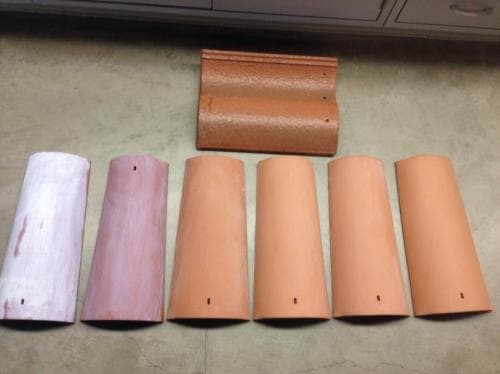Roof Tiles That Clean Air Developed By Chemical Engineers From UC Riverside
Imagine a good old house with roof tiles that help keeps the air around it safe to breath. A team of engineers from Bourns College of Engineering at University of California have been successful in doing just that. They have created a coating of titanium dioxide mixture that can be applied to any roof to reduce the amount of nitrogen oxide in air by 88-97%, which is responsible for creating smog (smoke+fog). Their experiments have shown that this new roof tile coating is capable of eliminating 21 tons of nitrogen oxide on a daily basis, if one million roofs were coated with it.
As per the calculations, the cost of coating the mixture is just $5 for an average-sized residential roof. The roof tiles available in market today do help in reducing pollution, but are not said to be effective against smog. Therefore, in their experiments, the chemical engineers at UC Riverside coated two identical clay tiles with different amounts of titanium dioxide and placed them inside a miniature atmospheric chamber built out of wood, Teflon and PVC piping. This chamber was connected to a source of nitrogen oxides and a device that reads concentrations of nitrogen oxides. Using UV light to simulate sunlight, the titanium dioxide could break down the nitrogen oxides.

At left, two tiles coated with the titanium dioxide mixture. At right, uncoated tiles. At top, a commercially available tile with titanium dioxide.
The engineering students are now looking forward to see the effects of their titanium dioxide mixture when mixed with exterior paints as well as concrete, walls or dividers along freeways. The questions such as - how long the coating will last and what impact changing the color of coating would have - still linger on.
What are your thoughts on the new roof tile coating? Share with us in comments.
Source: #-Link-Snipped-#
As per the calculations, the cost of coating the mixture is just $5 for an average-sized residential roof. The roof tiles available in market today do help in reducing pollution, but are not said to be effective against smog. Therefore, in their experiments, the chemical engineers at UC Riverside coated two identical clay tiles with different amounts of titanium dioxide and placed them inside a miniature atmospheric chamber built out of wood, Teflon and PVC piping. This chamber was connected to a source of nitrogen oxides and a device that reads concentrations of nitrogen oxides. Using UV light to simulate sunlight, the titanium dioxide could break down the nitrogen oxides.

At left, two tiles coated with the titanium dioxide mixture. At right, uncoated tiles. At top, a commercially available tile with titanium dioxide.
What are your thoughts on the new roof tile coating? Share with us in comments.
Source: #-Link-Snipped-#
0

